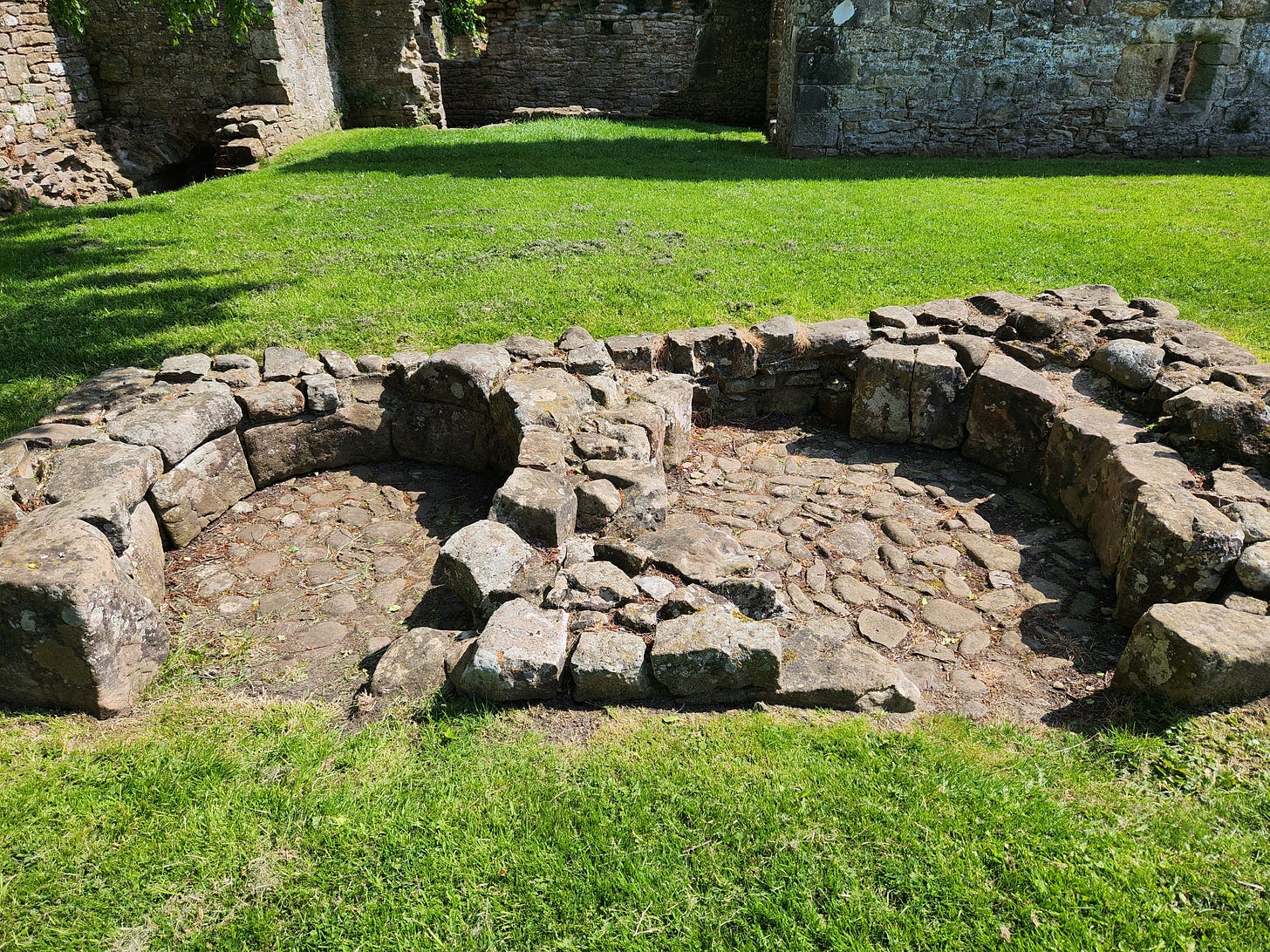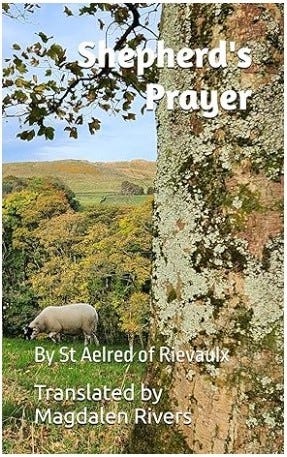Text
At the gate of the monastery let there be placed a wise elder, who knows how to receive and give an answer, and whose maturity does not let him wander.
Ad portam monasterii ponatur senex sapiens, qui sciat accipere responsum et reddere, cujus maturitas eum non sinat vagari.
This porter should have a cell near the gate, so that he may always be found present to give an answer to visitors.
Qui portarius cellam debet habere iuxta portam, ut venientes semper præsentem inveniant a quo responsum accipiant.
And as soon as anyone knocks or a poor man calls, let him respond with “Thanks be to God” or give a blessing; and with all gentleness of the fear of God let him h give a response quickly, with the fervour of charity.
Et mox ut aliquis pulsaverit aut pauper clamaverit, “Deo gratias” respondeat, aut benedicat; et cum omni mansuetudine timoris Dei reddat responsum festinanter, cum fervore caritatis.
If the porter needs assistance, let him have one of the younger brothers.
Qui portarius, si indiget solatio, juniorem rem accipiat.
If it is possible, let the monastery be so constructed that all necessary things, that is, water, mill, garden, bakery, and the various crafts be contained within the monastery, so that there is no need for the monks to wander outside; for in no way is this good for their souls.
Monasterium autem si fieri potest, ita debet construi, ut omnia necessaria, id est, aqua, molendinum, hortus, pistrinum, vel artes diversæ intra monasterium exerceantur, ut non sit necessitas monachis vagandi foras; quia omnino non expedit animabus eorum.
We wish this Rule to be read often in the community, so that none of the brothers may give himself the excuse of ignorance.
Hanc autem Regulam sæpius volumus in congregatione legi, ne quis fratrum de ignorantia se excuset.
In this weekly post I translate a section of the Rule of St Benedict and add comments from monastic commentators or my own observations.
Comment
The porter is such an important role in the monastery that it has its own chapter; indeed often this person is the first monk the visitors will meet. There is, of course, an assumption here that the monks are strictly enclosed (just as contemplative nuns are) behind walls and locked gates, something which wasn’t always the case in the late medieval period and isn’t always the case today.
He should be old, mature and wise; this is not a job for someone in the flush of youth. Judgment is required and he must be well disciplined and selfless enough so that he can respond to visitors at any time, however inconvenient. This is a role of service to the community and to God, as he responds “Deo Gratias” when anyone knocks (or rings the bell).
He is to have his accommodation near the gate – this is/was the case with extern sisters for contemplative nuns, who live outside the enclosure and it was also the case with medieval monasteries, where the porter would have a cell over or near the gate.
What does St Benedict mean by “receive or give an answer”? That’s the literal interpretation of the Latin, but in practice what it seems to have meant is a bit more substantial; perhaps business, commission, that kind of thing. Any goods coming into the monastery would also come through the gate, along with any goods leaving. So it may be food deliveries coming in, for example. It’s a busy job, with physical demands, which is why St Benedict is careful to mention that if he needs it, one of the young brothers should help him.
Monastic gates were often large, such as this example from Whalley Abbey, which also had a chapel on the first floor for guests. The gatehouse at Whalley has several internal doors, one of which would have led to the porter’s cell, and it also contains a lot of space for the temporary storage of goods and carts for onward transmission. Undoubtedly the porter would have summoned help to deal with large deliveries or important guests; I’m not sure if it is still done today, in this age of mobile phones, but until recently the porter would have a handbell to summon officials of a smaller monastery; the number of rings would be a code to indicate who was needed at the gate. For example, 1 for the abbot, 2 for the prior and so on.
The cloister at Furness Abbey; it is known that the buildings to the right hand side of this picture were used for various crafts, including metalworking.
The next paragraph talks about trying to contain as much of the monastery’s needs within its walls, to avoid the need to go out. This is why medieval monasteries covered such a vast area; the need for workshops, gardens, ovens, even a mill to grind flour. The monastery would own lands outside or further away where cereals would be grown; the crop would then be transported to the monastery for milling and baking or even for making beer. Everything was contained within the walls, a true community, largely self-sufficient.
Ovens at Easby Abbey
While those of us living a non-monastic life don’t have the opportunity to live our lives completely within four walls, I do think this chapter teaches us some valuable lessons. Firstly, going outside does carry risks to our souls and so while we have to do it, we should be aware enough to try to avoid those dangers. It could mean, for example, not going to a place where immoral behaviour is commonplace or bad language endemic. Secondly, while we may simply want to shut the world out when we are home, God may send us visitors or interruptions which we may not welcome; we should see this as the will of God and thank him for them, just as the porter monk calls out “Deo Gratias” when he is summoned.
The final line of the chapter indicates that at one time this was the end of the Rule; it must be read regularly so that no-one can plead ignorance. In most monasteries to day, the monks follow a reading pattern which ensure it is read three times per year. Some read it alternately in Latin and English, mostly where Latin is still a key part of the liturgical life.
Next chapter
If you don’t want to take out a paid subscription, but wish to support my writing please consider leaving a tip! Thanks for your support.
Have you seen my new publication - Shepherd’s Prayer? Available now via Amazon around the world, the isbn is: 979-8344184814.








